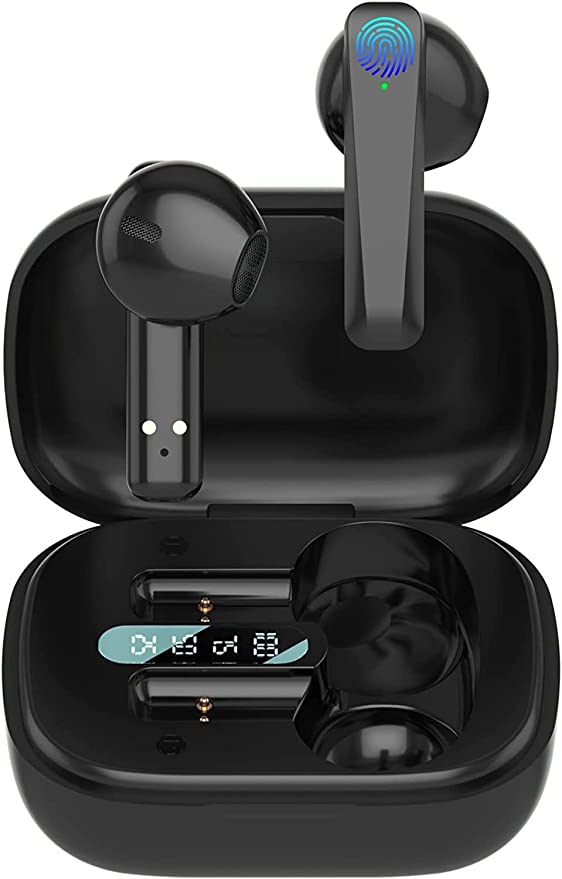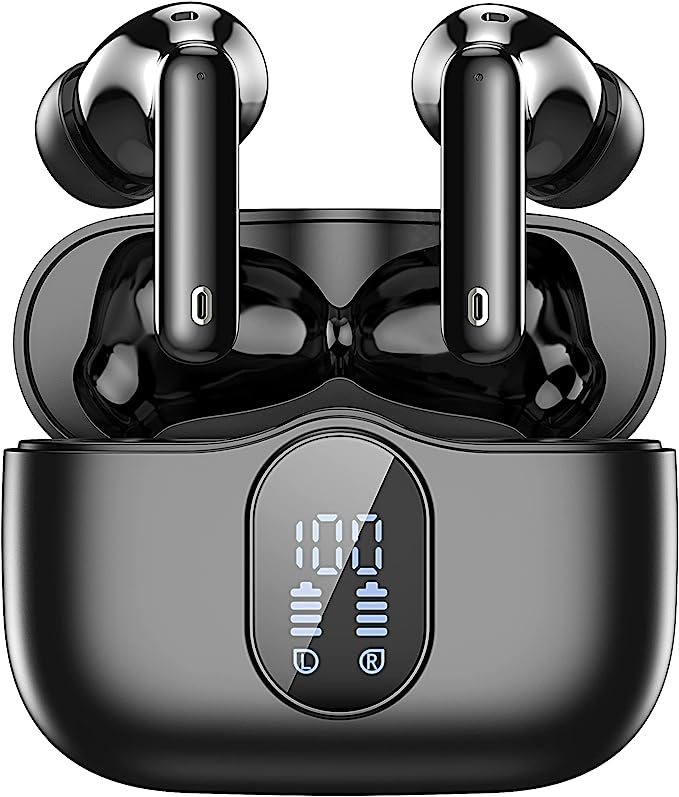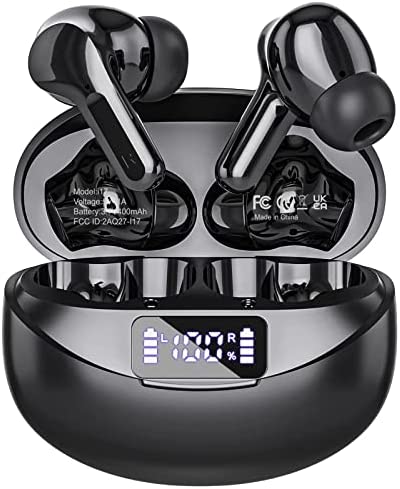We live in an era of invisible connections, our lives increasingly soundtracked by music, podcasts, and calls flowing wirelessly into our ears. It’s a form of everyday magic, this untethered audio freedom. Yet, it often comes with a nagging question, especially when navigating the more accessible end of the market: can affordable wireless earbuds really deliver on the promise of reliable, enjoyable technology?
Instead of seeking a simple “yes” or “no,” let’s embark on a more illuminating journey. Consider the Csasan J90 Pro earbuds, a product representative of many aiming to blend modern features with a budget-friendly price tag. We won’t treat them as the pinnacle of audio engineering, nor dismiss them outright. Instead, let’s use them as a fascinating case study – a tangible example through which we can dissect and understand the science and engineering principles packed into contemporary wireless audio gear. From an audio tech perspective, what’s really going on under the hood when a product claims Bluetooth 5.3, “HiFi” sound from specific drivers, noise cancellation, long battery life, and robust water resistance? Let’s unpack the tech.

The Invisible Thread: Making Sense of Bluetooth 5.3
Remember the not-so-distant past of tangled headphone wires? Bluetooth technology liberated us, evolving rapidly from its early, sometimes finicky, iterations. Think of Bluetooth as an invisible data pipe connecting your devices. Each new version aims to make that pipe wider, faster, more reliable, or more energy-efficient. The J90 Pro earbuds feature Bluetooth 5.3. So, what does that specific number signify?
While Bluetooth 5.0 brought significant improvements in range and speed over the 4.x series, versions like 5.1, 5.2, and 5.3 offer more incremental, yet crucial, refinements. Bluetooth 5.3 isn’t necessarily about a dramatic leap in raw speed for audio streaming but focuses heavily on connection reliability and power efficiency. It introduces features designed to reduce interference, allow devices to switch roles more quickly, and enable more efficient data transmission, which translates directly to less battery drain on both your earbuds and your phone. It’s akin to upgrading your home Wi-Fi router – not necessarily for blazing top speeds, but for fewer frustrating dropouts and a more stable experience overall, especially in environments crowded with other wireless signals.
Furthermore, Bluetooth 5.3 helps lay the groundwork for features associated with LE Audio (Low Energy Audio), a significant next step for Bluetooth audio, though its full implementation requires support across the entire ecosystem. For the J90 Pro user, the claimed benefits – a stable connection touted to reach up to 15 meters under ideal conditions and the convenience of “One-Step Auto Pairing” (where the buds quickly reconnect to the last paired device upon opening the case) – are direct applications of the stability and efficiency improvements inherent in the 5.3 standard. The payoff? Less time fiddling with connections, more time enjoying your audio as you move freely around your home or office.

The Heart of the Sound: Drivers, Size, and Speaking the Right Language (Codecs)
Sound quality is subjective, but the hardware producing it follows physical principles. The J90 Pro description mentions “HiFi Stereo” sound facilitated by 13mm composite diaphragms. Let’s break that down.
Feeling the Bass? The Role of the 13mm Driver:
The diaphragm, or driver, is the vibrating heart of any speaker or earbud. It pushes air to create the sound waves our ears interpret. In very basic terms, a larger driver (like the 13mm ones cited here) has the potential to move more air than a smaller one (say, 6mm or 8mm found in some compact buds). This greater air displacement can translate to a fuller sound, potentially with more presence in the lower frequencies – the bass and mid-bass that give music its warmth and punch. Think of the difference between a tiny portable speaker and a larger bookshelf speaker; the bigger one generally produces a richer, deeper sound due to its larger components.
However, it’s crucial to avoid the trap of thinking “bigger is always better.” Driver size is just one variable. The material of the diaphragm (here, “composite” suggests a blend, aiming for stiffness and lightness), the acoustic design of the earbud housing, and especially the electronic tuning applied to the sound signature play enormous roles. A large driver poorly implemented can sound boomy or muddy. So, while the 13mm drivers in the J90 Pro offer the potential for a robust sound, the actual “HiFi” experience depends heavily on the overall engineering quality – something difficult to gauge from specifications alone.
Audio Linguistics: Understanding the AAC Codec:
Digital audio files are large. To send them wirelessly via Bluetooth without constant buffering, they need to be compressed, much like zipping a large file before emailing it. This compression is handled by an audio codec (coder-decoder). The J90 Pro supports AAC (Advanced Audio Coding).
Think of codecs as different languages for audio compression. The most basic, universal Bluetooth codec is SBC, which prioritizes connection stability over sound quality and can sometimes sound a bit flat. AAC, famously adopted by Apple for its devices, generally offers better sound quality than SBC at similar data rates. It uses more sophisticated perceptual coding techniques to discard data less likely to be noticed by the human ear. This means if you’re using an iPhone or iPad, the J90 Pro connecting via AAC should provide a good quality listening experience. While widely supported on Android too, its performance can sometimes be more variable depending on the specific phone’s implementation. It’s important to remember that AAC is still a lossy codec – some data is permanently discarded during compression, unlike lossless codecs which are generally not feasible over standard Bluetooth connections. Supporting AAC makes the J90 Pro broadly compatible and capable of delivering respectable audio quality, particularly within the Apple ecosystem.

“Can You Hear Me Now?” Demystifying ENC for Clearer Calls
One of the most common frustrations with earbuds is poor call quality, especially when you’re in a noisy environment. The J90 Pro description highlights “ENC Noise Cancelling Mics,” claiming they “passively cancel 80% of background noise.” Let’s clarify what ENC actually means here.
It’s vital to differentiate ENC (Environmental Noise Cancellation) from the more widely known ANC (Active Noise Cancellation). ANC systems are designed primarily for the listener; they use microphones to pick up ambient noise and generate inverse sound waves (“anti-noise”) to cancel it out before it reaches your eardrum, creating a quieter listening experience.
ENC, on the other hand, focuses on improving the quality of your voice being transmitted to the person you’re calling. It typically uses multiple microphones on the earbuds (the J90 Pro claims dual mics). By comparing the signals received by these mics, sophisticated algorithms can attempt to distinguish your voice (which should arrive at the mics at slightly different times and intensities) from the surrounding environmental noise (like traffic, wind, or cafe chatter). The system then tries to filter out or suppress that background noise from the microphone signal before it’s sent over the Bluetooth connection. Think of it as giving the microphones a kind of ‘tunnel vision’ or ‘directional hearing,’ helping them focus on you, the speaker.
The claim of “passively cancel[ling] 80%” is likely marketing simplification. True passive cancellation comes from the physical seal of the earbud in your ear (noise isolation). ENC is an active signal processing technique applied to the microphone feed. While ENC systems can definitely improve call clarity significantly compared to basic single-mic setups, the actual percentage of noise reduction is highly variable depending on the type and volume of noise, the sophistication of the algorithm, and the quality of the microphones themselves. The key takeaway is that ENC aims to make your voice sound clearer and less drowned out by your surroundings for the person you are talking to. It’s a valuable feature for making calls more intelligible when you’re out and about.

The Long Haul: Battery Life That Keeps Pace
Wireless freedom is only truly freeing if you’re not constantly tethered to a charger. Battery life is a make-or-break feature for earbuds. The J90 Pro specifications are quite typical for modern true wireless earbuds: a claimed 6 to 8 hours of playtime from the earbuds on a single charge, with the pocket-sized charging case providing additional recharges for a total potential playtime of around 40 hours. Recharging the buds themselves is stated to take about 1.5 hours.
These numbers, while needing real-world testing for verification, suggest enough endurance for even long listening sessions or multiple commutes/workouts before needing the case, and the case itself potentially lasting a week or more of typical use before needing its own recharge via the convenient USB-C port.
Beyond the raw numbers, a small but significant feature is the LED power display on the charging case. This often shows the remaining charge percentage of the case itself, and sometimes indicates the charge status of each individual earbud. It’s like having a reliable fuel gauge for your audio gear. This simple visual feedback helps eliminate battery anxiety, letting you know at a glance if you have enough juice for your next outing or if it’s time to plug in. Inside these tiny devices, Lithium Polymer (Li-Poly) batteries are the standard choice, offering a good balance of energy density (fitting ample power into a small space), safety, and the ability to be molded into various shapes.
Life-Proofing Your Listening: IP7 Water Resistance and Finding Your Fit
Life happens. Whether it’s an intense workout, a sudden downpour, or just daily wear and tear, durability matters. The J90 Pro highlights an IP7 waterproof rating. What does this code actually mean?
IP stands for Ingress Protection, and the rating system (defined by the international standard IEC 60529) classifies the degree of protection against intrusion from solids (first digit, often ‘X’ if untested or irrelevant) and liquids (second digit). The ‘7’ in IPX7 specifically means the device is protected against the effects of temporary immersion in water. The standard test involves submerging the device in up to 1 meter of fresh water for 30 minutes.
In practical terms, an IP7 rating provides robust protection against sweat and rain. You shouldn’t worry about damaging the J90 Pro during a sweaty gym session or if you get caught in a rain shower while running errands. It might even survive a brief, accidental drop into a sink (though rinsing and drying thoroughly afterwards is crucial). It’s important to note this doesn’t mean they are suitable for swimming – continuous immersion, water pressure (like from diving), and chemicals (like chlorine or salt water) are beyond the scope of IPX7. But for everyday moisture hazards, this level of protection, often achieved through careful sealing and nano-coating on internal components as mentioned in the description, adds significant peace of mind and practical durability.
Equally important for both sound and usability is ergonomics. An in-ear earbud needs to fit snugly and comfortably. A poor fit not only feels unstable and can cause discomfort over time, but it also compromises sound quality by preventing a proper acoustic seal, which is vital for good bass response and passive noise isolation (blocking outside sound simply by plugging your ear). The inclusion of three different sizes of silicone ear tips (Small, Medium, Large) is standard but essential, allowing users to experiment and find the size that best matches their unique ear canal shape for optimal comfort, stability (preventing them from falling out during activity), and sound performance. Complementing the fit are the touch controls located on the earbuds themselves, offering a convenient way to manage music playback, adjust volume, and handle calls without constantly reaching for your phone – although touch controls on any earbud can sometimes have a slight learning curve or be prone to accidental activation.
Concluding Thoughts: Smart Tech, Smart Choices
Dissecting the Csasan J90 Pro, feature by feature, reveals a microcosm of the technology embedded in countless modern wireless audio devices. We’ve journeyed through the invisible lanes of Bluetooth 5.3 aiming for stable connections, peered into the physics of 13mm drivers striving for fuller sound, translated the digital dialect of the AAC codec, clarified the noise-handling role of ENC for clearer calls, appreciated the endurance offered by modern battery tech with helpful displays, and understood the real-world resilience provided by an IP7 waterproof rating.
Understanding these fundamentals – the what, the how, and the why behind the specs – does more than just satisfy curiosity. It empowers us as consumers. It allows us to look beyond marketing buzzwords and evaluate whether a product’s claimed features, grounded in specific scientific and engineering principles, truly align with our needs and expectations.
The democratization of technology is a remarkable thing. While high-end audio gear will always push the boundaries, it’s genuinely impressive how much carefully considered technology can be engineered into affordable products like the J90 Pro appears to be, based on its description. There are always trade-offs in design and manufacturing, particularly at accessible price points. But by understanding the science inside, we can make smarter choices, appreciating the value offered and recognizing the clever engineering that makes our wireless world sing – and work.




